Walt Disney World is continuing to stretch its wings in global conservation, particularly through its involvement in the comeback story of the Guam kingfisher.
As part of its Disney Planet Possible commitment to support a healthier planet for people and wildlife, and after years of collaboration and preparation, two Guam kingfishers have been released and are now being monitored in the wild on Palmyra Atoll — a remote island south of Hawaii — an important step for the future of this species.
Known locally by the indigenous CHamoru people as the sihek in its native home in Guam, this medium-sized bird with a strong bill, striking cinnamon-orange and metallic blue feathers faced major declines after the introduction of the invasive brown tree snake in the 1950s, leading to its extinction in the wild by 1988. Disney is one of only nine organizations in the U.S. actively engaged in the Sihek Recovery Program — a major initiative aiming to return the birds back to the wild. Currently, there are only 127 Guam kingfishers being cared for across 25 zoos in the continental U.S. and at a Guam Department of Agriculture facility, according to the U.S. Fish and Wildlife Service (USFWS).
The decline of the Guam kingfisher serves as a cautionary tale about the negative impact an invasive species can have on native wildlife. Similar to the invasive Burmese python affecting Florida wildlife, the brown tree snake decimated the wild Guam kingfisher population, prompting the USFWS to designate Palmyra Atoll as an experimental population site in 2022.

Disney’s Role in the 2024 Release Population
This progress toward species’ recovery is thanks to collaborative efforts among many globally recognized federal, state, and private collaborators such as the USFWS, Zoological Society of London (ZSL), the Guam Division of Aquatic & Wildlife Resources (DAWR), The Nature Conservancy (TNC), Association of Zoos and Aquariums (AZA) institutions including Sedgwick County Zoo and Disney’s Animal Kingdom, and the International Union for the Conservation of Nature (IUCN).
Disney has been deeply involved in the conservation of the Guam kingfisher through its team work with the AZA and the Guam Kingfisher Species Survival Plan (SSP), which began back in 1983.
Based on learnings and experience in caring for its own small flock of Guam kingfishers in its backstage Avian Research Center (ARC) at Disney’s Animal Kingdom, Disney veterinarians and animal care experts have been able to share best practices about the birds’ wellbeing, nutrition and disease risk analysis with collaborators in the Sihek Recovery Program in preparation for the birds’ eventual return to Guam. Their exceptional care also enabled a breeding pair at Disney’s Animal Kingdom to successfully lay an egg, which later hatched at another accredited AZA facility and was a part of this year’s release program.
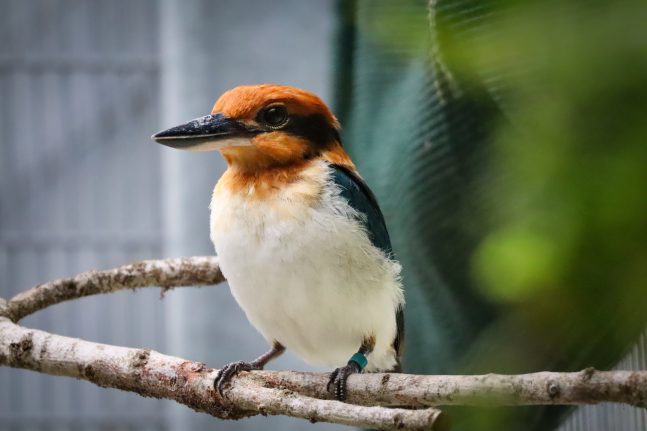
Dr. Deidre, a Disney veterinarian, has led much of the critical Guam kingfisher SSP health research since 2010 at Disney’s Animal Kingdom.
“Our primary goal right now is to build what’s called an insurance population of these birds,” explained Dr. Deidre, “We hope to have a genetically diverse population, with the hope that they breed and expand to build bigger populations in the future.”
Preparation and Tracking of the Birds
Reintroducing Guam kingfishers is a complex initiative that requires hand-rearing animals in managed care settings, then carefully acclimatizing and releasing them into a predator-free habitat, with hopes of one day reintroducing them back into Guam where they can breed naturally.
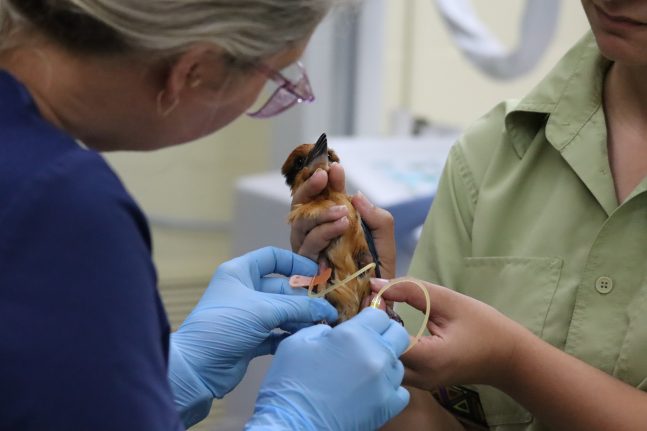
To prepare for the 2024 release, a handful of Guam kingfishers underwent pre-release quarantine and health assessments to ensure their wellbeing. Two of the birds under Disney’s care were examined back in August, receiving fluids and final checks before being safely flown in containers — decorated with artistic bumper stickers that were created by children of Disney cast members — to the Sedgwick County Zoo in Kansas. The birds stayed at the AZA accredited facility before being flown to their destination of Palmyra Atoll in late August.

During their short time in quarantine on the island, each of the birds became accustomed to the sights and sounds of their surroundings — which included snacking on small insects, crabs and small lizards. Before the Guam kingfishers were released, each were fitted with tiny radio transmitter devices so teams could track their progress and movements on the island in the weeks and months ahead.
“The Nature Conservancy has a staff monitoring these birds with small transmitters to track them,” said Dr. Deidre. “We have established a network of support through telemedicine and conference calls to address any issues as these birds adapt to their new environment.”
Future efforts
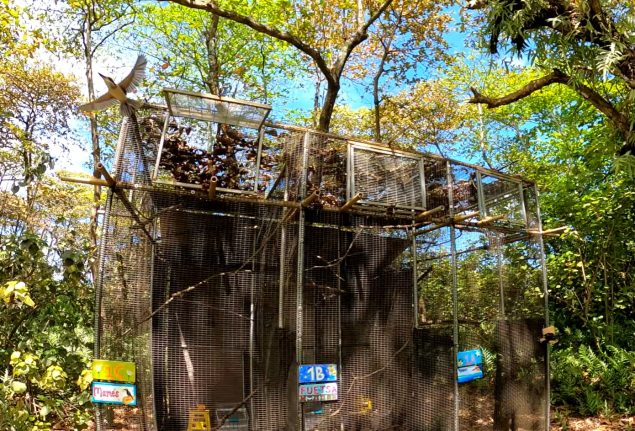
This ongoing support ensures that the birds’ wellbeing remains a priority as they acclimate to their new habitat. As this historic project unfolds, it not only celebrates the recovery of the Guam kingfisher but also serves as a beacon of hope for the future of global biodiversity.
“These two birds represent the care and dedication that our cast members have provided over the years, symbolizing an incredible opportunity for zoos to play a vital role in saving species,” Dr. Deidre concluded.
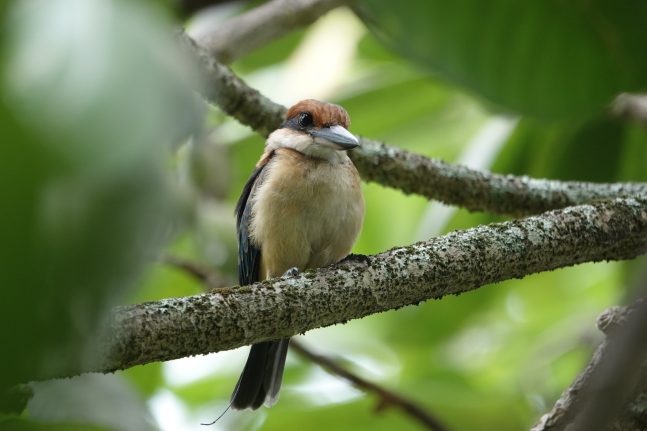
Disney’s efforts to save the Guam Kingfisher are just one part of the dedicated work in Guam. Teams are also actively involved in aiding the repopulation of the small Guam rail, a bird known locally as the ko’ko’.
Additionally, Disney Conservation is committed to working to protect wildlife, including Guam kingfishers and hundreds of other bird species, and build a diverse global community inspired to celebrate the magic of nature together.
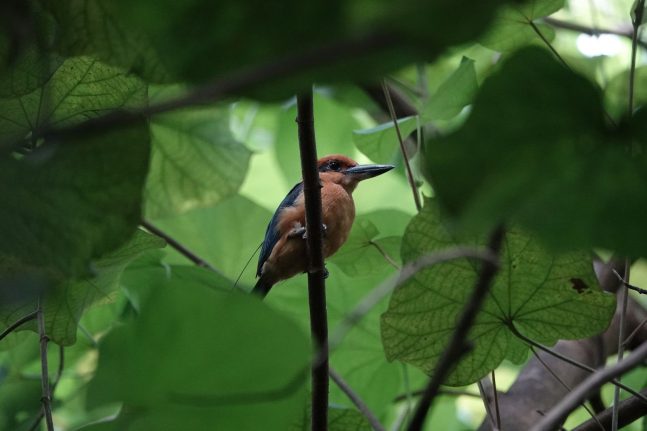
Since 1995, the Disney Conservation Fund has directed more than $125 million to community conservation programs along with the expertise of our dedicated teams to support organizations working with communities to protect wildlife, inspire action, and promote environmental resilience.
To learn more about Disney’s commitment to the environment through Disney Planet Possible, visit https://impact.disney.com/environmental-sustainability/.
